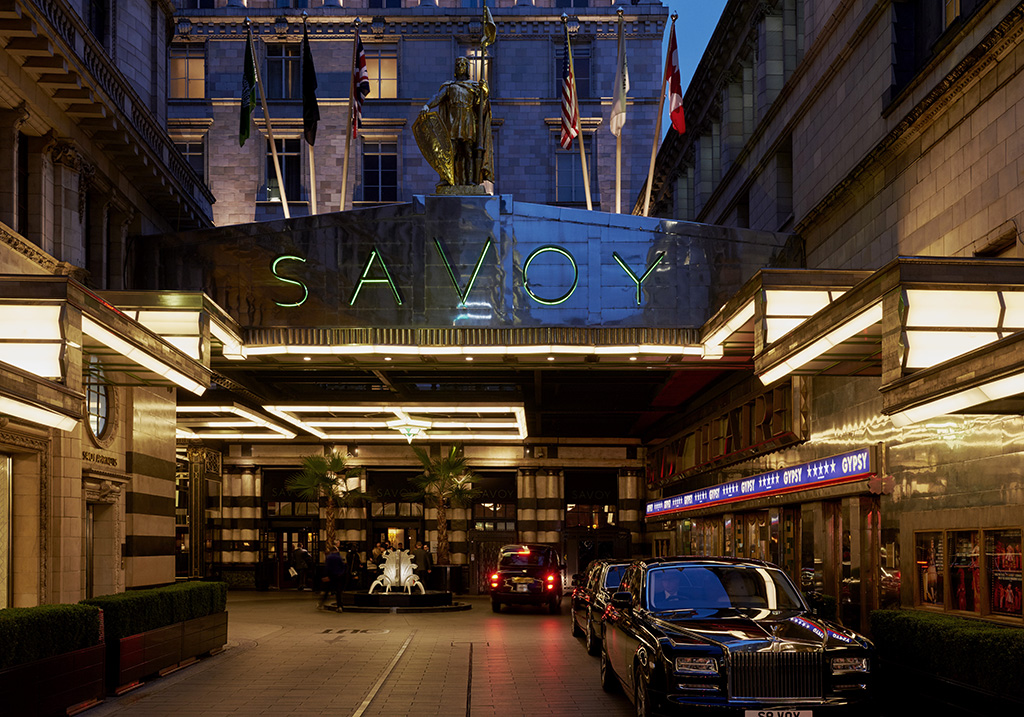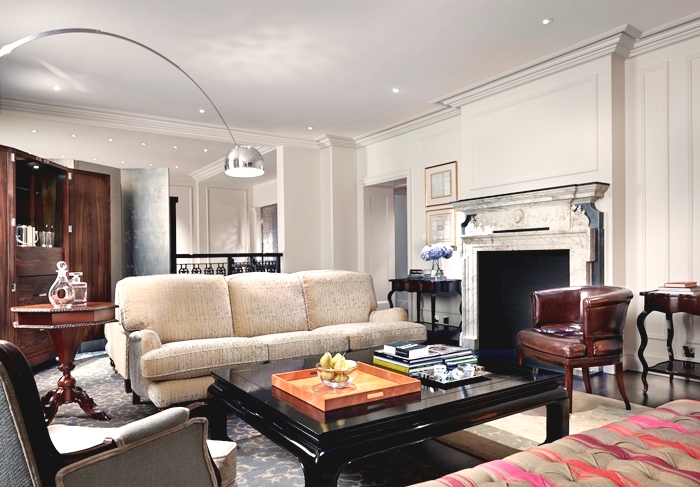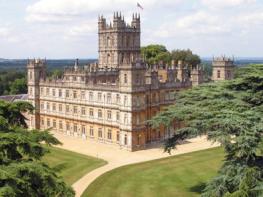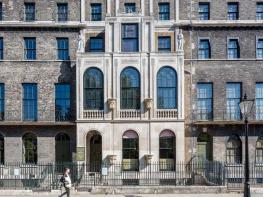One Aldwych is just off The Strand, among smart boutiques, vibrant restaurants and thrilling…
From Temple through Holborn

1.5 miles (2.4kms)
About the walk
The compact area highlighted here between Temple and Fleet Street is home to some fine buildings that survived the Great Fire of London. Not only that, but to walk through this great legal institution is to take a step back in time. Charles Dickens, who was a keen walker and often covered 20 miles (32km) in a day, was a frequent visitor to the area and set some of his novels there.
Personal experience
Born to parents who lived beyond their means, Dickens first saw the darker side of life when his father was imprisoned for debt. He went to work in a shoe-blacking factory and it was this experience that formed the basis of his views on the injustice of poverty and that broadened his scope and insight. At the age of 15 he spent a year as a solicitor's clerk in Gray's Inn. Later he mastered the art of shorthand and took a job as a reporter on the Morning Herald before producing a series of pieces for monthly and weekly publications, writing these under the pseudonym of 'Boz'. Dickens used his articles to highlight social issues and the plight of the poor. These short pieces also allowed Dickens to develop the technical skill that he would use to great effect later.
His novels were initially serialised in this way too and Victorian readers, especially the lower middle classes, couldn't get enough of him – they would eagerly await the next instalment, just as many people today follow 'soaps' on television.
Living up to expectations
You'll see when you reach Fountain Court how little it can have changed in more than 150 years. The place is particularly atmospheric at dusk when the Victorian street lamps are alight. It is here that Tom meets his sister Ruth, in the novel, Martin Chuzzlewit (1843): '...the fountain sparkled in the sun, and laughingly its liquid played music and merrily the idle drops of water danced and danced'.
Further on, the Middle Temple, with its winding alleys and gardens, feels like a village. Based on his time as a solicitor's clerk at Ellis and Blackmore, Dickens wrote: 'There is yet, in the Temple, something of a clerkly monkish atmosphere which public offices of law have not disturbed and even legal firms have failed to scare away...'. In Martin Chuzzlewit, Dickens describes how Tom felt about going to work in the Temple: '... he turned his face towards an atmosphere of unaccountable fascination, as surely as he turned it to the London smoke ... until the time arrived for going home again and leaving it, like a motionless cloud behind'. Although the London smoke is no longer around, you'll see what Dickens meant as you explore this little area of calm away from the busy City streets.
Walk directions
Turn left at the exit to Temple tube and up a set of steps. Turn right into Temple Place. At the end go left into Milford Lane and continue ahead up another series of steps, into Inner Temple. Turn right by the Edgar Wallace pub into Devreux Court, walk under the archway and bear right to go down the steps to Fountain Court.
Bear left to pass the Middle Temple Hall and go under an archway into Middle Temple, past a small fountain and garden and up the steps, then continue through some cloisters to reach the Temple Church, featured in The Da Vinci Code film. Carry on to the left of the church along a cobbled alley to pass under an archway and emerge on to Fleet Street.
Turn left along Fleet Street and cross at the pedestrian lights. After the Old Bank of England pub turn right into Bell Yard and continue ahead on the path that runs alongside the Royal Courts of Justice. Turn left and then right through the archway into New Square; follow the avenue of trees.
Take the path on the far right past Lincoln's Inn Chapel to reach Stone Buildings and there turn right and go through the gates that lead to Chancery Lane, via a narrow lane. Cross this road, bear right and then turn left into the street called Southampton Buildings. After just 20yds (18m) this veers sharply left, past the London Silver Vaults, the world's largest collection of fine antique silver. At the end cross High Holborn and pass through a gateway to Gray's Inn on the right. A few paces further, after Gray's Inn Hall, turn left into Field Court.
Continue to the end then turn right and go up the steps into Jockey's Fields. Bear left and take the second road on the left, Hand Court. Just past the Bunghole Cellars at the end, turn right along High Holborn to reach Holborn tube.
Additional information
Paved streets and some cobbled alleys
Alleyways and buildings of architectural interest
Not allowed in many streets in the Inn
AA Street by Street London
Lincoln's Inn Fields
WALKING IN SAFETY
Read our tips to look after yourself and the environment when following this walk.
Find out more
Also in the area
About the area
Discover Greater London
Greater London is one of the world’s largest urban areas; 33 boroughs stretching north to Enfield, south to Croydon, east to Havering, west to Hillingdon and with central London at the heart of it all.
Greater London was officially created in 1965, but the boroughs themselves all have their own histories going back much further. Greenwich is home to the Prime Meridian, which all clocks on earth take their time from, while Hounslow contains Heathrow Airport, one of the busiest airports in the world. Greater London contains a multitude of parks and green spaces, from the six Royal Parks (including Richmond Park, Green Park, Hyde Park and Regent’s Park) and other huge open spaces like Hampstead Heath and Clapham Common; to smaller community spaces like Clissold Park in Stoke Newington and Burgess Park in Southwark.
The centre of London has its quiet spaces too, like Coram’s Field by Great Ormond Street, and Camley Street Natural Park, a stone’s throw from King’s Cross and St Pancras. One of the city’s most impressive features is the London Underground. Beginning in 1863 as the Metropolitan Railway, it took commuters into The City from the suburbs of Middlesex. It was the first underground railway in the world, and now consists of 11 lines, 270 stations, and 250 miles (402km) of track. It’s estimated that nearly five million journeys are taken every day, and there are nearly one and a half billion riders each year. At peak times, there are more than 543 trains whizzing around the Capital.
Nearby stays
Restaurants and Pubs
Nearby experiences
Recommended things to do
Why choose Rated Trips?
Your trusted guide to rated places across the UK
The best coverage
Discover more than 15,000 professionally rated places to stay, eat and visit from across the UK and Ireland.
Quality assured
Choose a place to stay safe in the knowledge that it has been expertly assessed by trained assessors.
Plan your next trip
Search by location or the type of place you're visiting to find your next ideal holiday experience.
Travel inspiration
Read our articles, city guides and recommended things to do for inspiration. We're here to help you explore the UK.
















